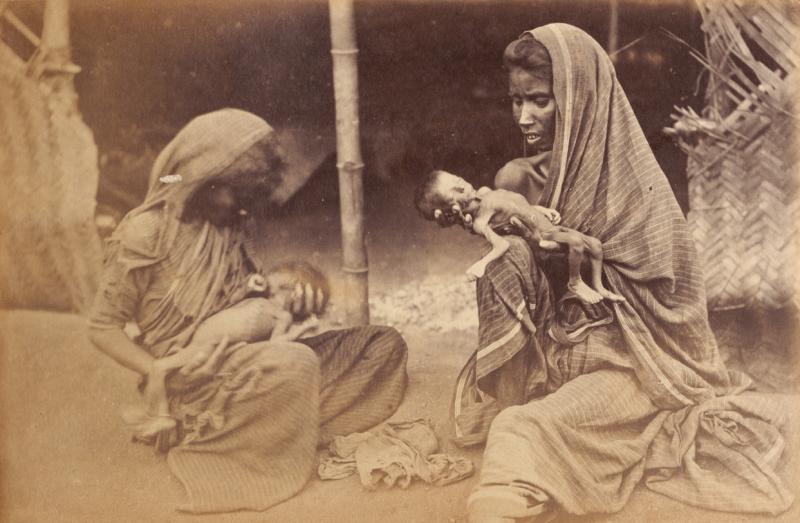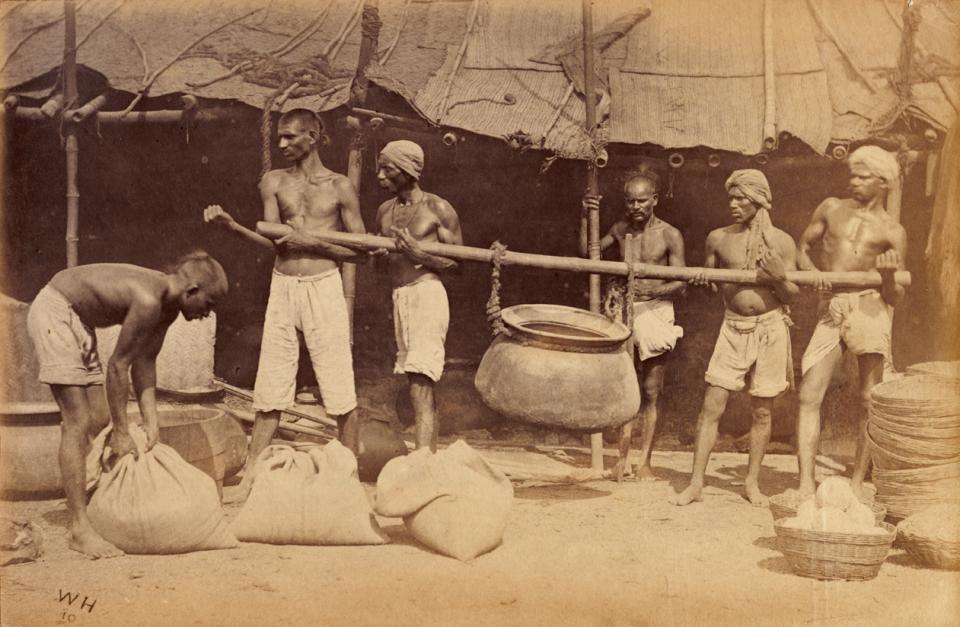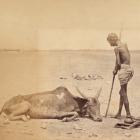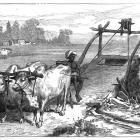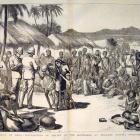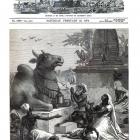Reaction of the Indian population
Indian responses to the famines, and to the British response to the crises, took a number of different forms: these included crime, organized resistance and protest, and migration. Some of the increased crime took the expected form of theft or robbery in order to obtain food.42 Such acts were often met with harsh punishment from the police.43 But other responses emphasize just how complex the environmental consequences of colonial policies could be, especially when complicated by the weather patterns that lead to famine.
For example, a report of the Administration of Bihar and Orissa complained of serious loss to the neighboring village population by the wholesale clearing of timber. The villagers had lost their free or cheap supply of wood, reducing their grazing land and causing their cattle to suffer severely. Wood being no longer available for fuel, cow dung replaced it and was then lost as natural manure. This led to a negative impact on soil fertility. It is the sum of these overlapping consequences that led to sustained protest from the local population.44
During famines and starvation, people were compelled to migrate to other regions within the country or to other countries in order to survive, becoming ecological refugees. For example, as a result of starvation within India, hundreds of thousands of Indians signed up to leave their homeland and work as indentured laborers on plantations in Sri Lanka, Mauritius, Guyana, and Nata.45

Famine in Mysore, India: six emaciated men wearing loin cloths, five sitting and one lying on a mat
Famine in Mysore, India: six emaciated men wearing loin cloths, five sitting and one lying on a mat
Photo by Willoughby Wallace Hooper, 1876-1878.
 This work is licensed under a Creative Commons Attribution-NonCommercial-ShareAlike 4.0 International License.
This work is licensed under a Creative Commons Attribution-NonCommercial-ShareAlike 4.0 International License.

Famine in Bangalore, India: a group of emaciated women and children
Famine in Bangalore, India: a group of emaciated women and children
Photo by Willoughby Wallace Hooper, 1876-1878.
 This work is licensed under a Creative Commons Attribution-NonCommercial-NoDerivatives 4.0 International License.
This work is licensed under a Creative Commons Attribution-NonCommercial-NoDerivatives 4.0 International License.
Of course, migration does not only involve leaving familiar environments and social networks behind, but it also produces a sense of loss, dislocation, alienation, and isolation. Indian migrants in these countries still remember India as their original home, often telling stories of how their ancestors came to the particular country. Their story is full of pain, misery, and horror, repeatedly emphasizing that they miss their original home and love their Indian culture, despite the fact that their ancestors migrated one hundred years before.
42 V. Damodaran, “Famine in a Forest Track: Ecological change and the Causes of the 1897 famine in Chotanagpur, Northern India,” in Nature and the Orient: Essays on the Environmental History of South and Southeast Asia, eds. R. Grove, V. Damodaran, and S. Sangwan (New Delhi: Oxford University Press, 1998), 853–90; Mahato “Environmental Change and Chronic Famine,” 86. One of the protests, the Deccan Riots, later took on symbolic status during longer protests launched by two prominent nationalist organizations, the Poona Sarvajanik Saabha and the Indian National Congress.
43 Klein, “When the Rains Failed,” 196.
44 Mahato, “Environmental Change and Chronic Famine,” 84; R. Kumar, “The Deccan Riots of 1875,” The Journal of Asian Studies 24, no. 4 (1965): 613–35.
45 Mahato, “Environmental Change and Chronic Famine,” 82–85; Davis, Late Victorian Holocausts, 112.


